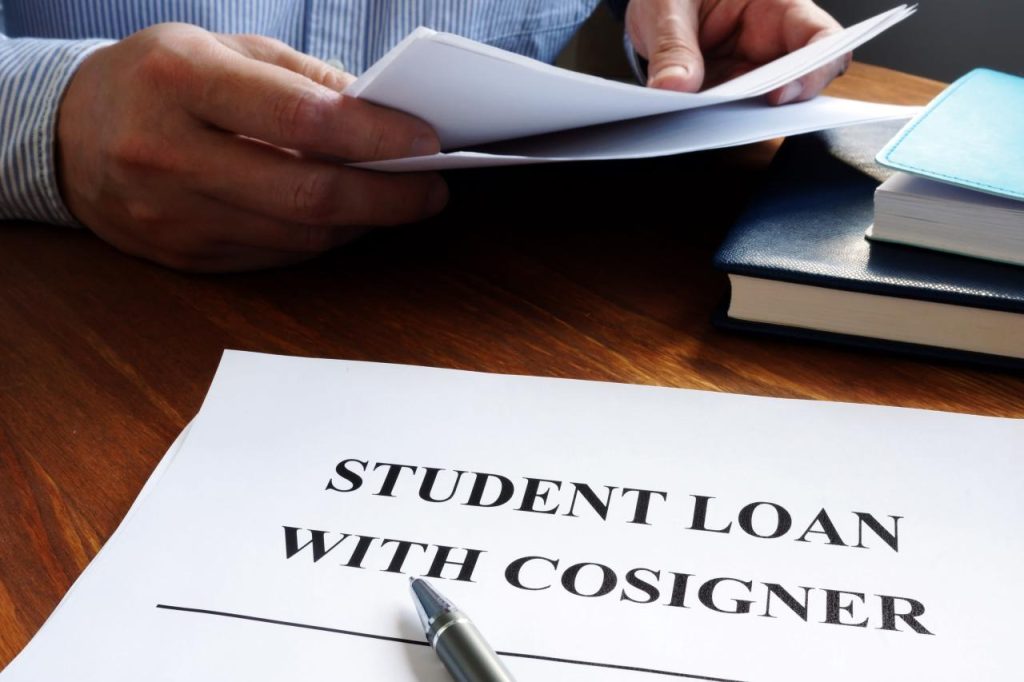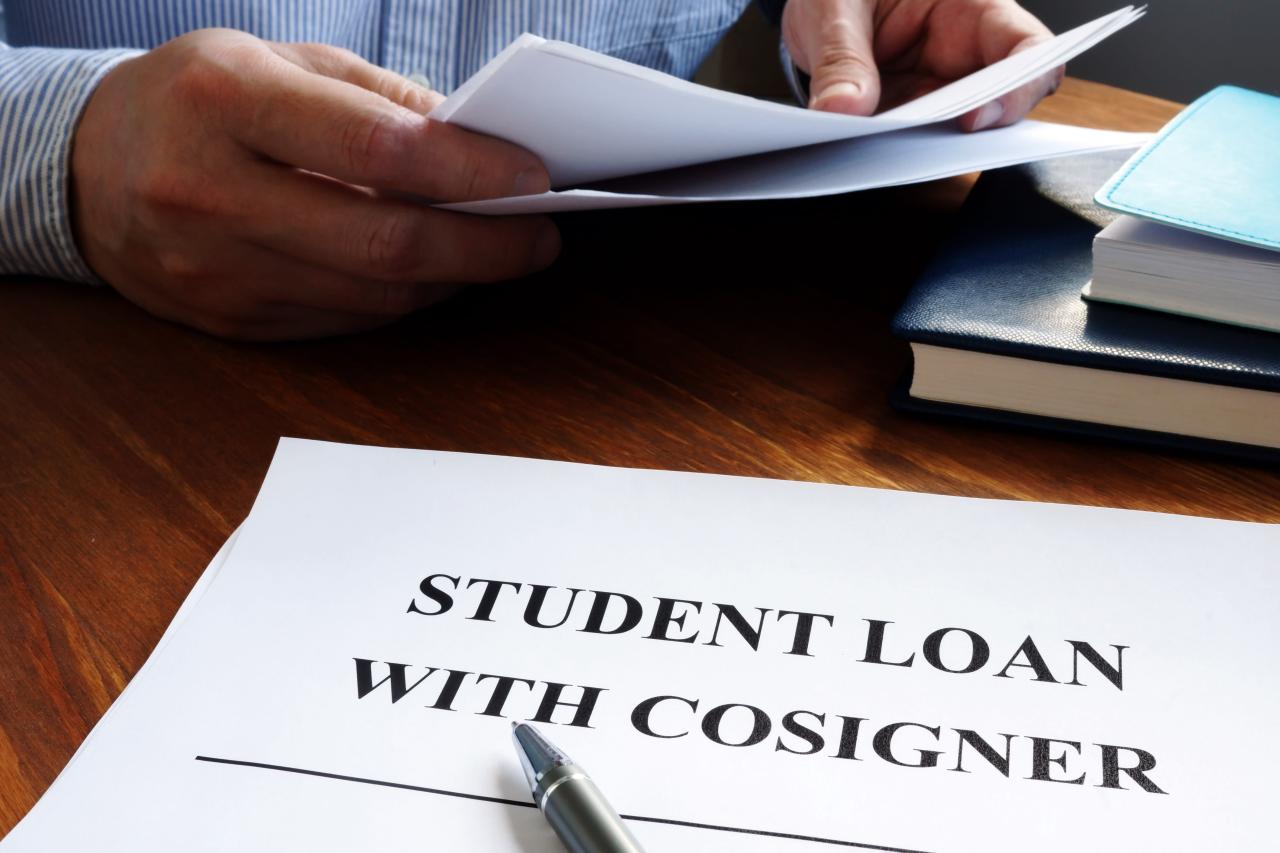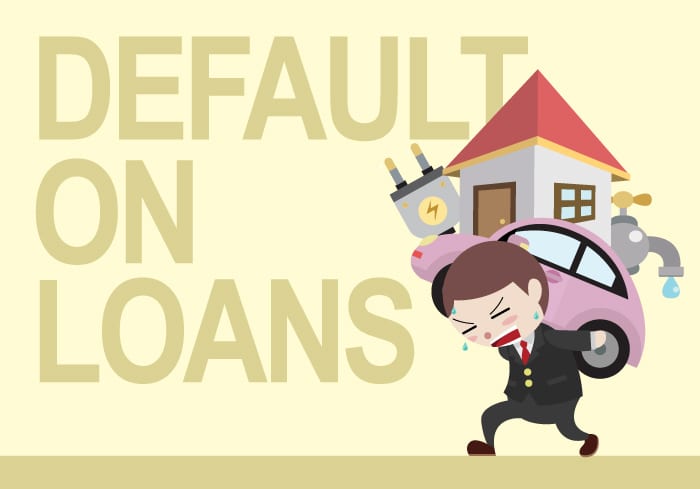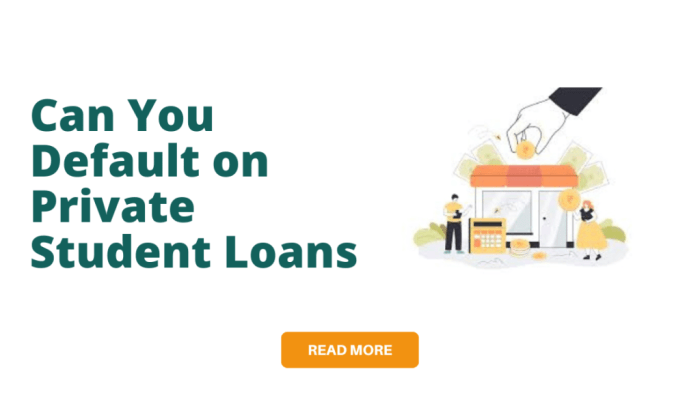
The weight of student loan debt is a significant concern for millions. While the promise of higher education is alluring, the path to repayment can be fraught with unforeseen challenges. This exploration delves into the complexities of student loan default, examining the factors that contribute to it, the potential consequences, and the available options for borrowers facing financial hardship. Understanding the process of default is crucial for responsible financial planning and navigating the intricacies of the student loan system.
This guide provides a comprehensive overview, moving from a clear definition of default and its ramifications to a discussion of preventative measures and strategies for managing debt after default has occurred. We will analyze various scenarios, offering insights into the practical implications of different choices and emphasizing the importance of proactive financial management.
Understanding Student Loan Default
Student loan default is a serious financial situation with significant consequences. It occurs when a borrower fails to make their scheduled loan payments for a specific period, leading to negative repercussions on their credit score and financial standing. Understanding the process and implications of default is crucial for borrowers to avoid this outcome.
Definition of Student Loan Default
Student loan default is officially defined as failing to make payments on your student loan(s) for a consecutive period of 270 days (nine months) for federal loans. The specific timeframe for private loans can vary depending on the lender, but it typically falls within a similar range. Once a loan enters default, the lender considers the debt delinquent and initiates collection procedures.
Consequences of Student Loan Default
The consequences of defaulting on student loans are severe and far-reaching. These include damage to your credit score, impacting your ability to obtain loans, credit cards, or even rent an apartment. Wage garnishment, where a portion of your paycheck is automatically seized to pay the debt, is a possibility. Tax refund offset is another consequence, where your tax refund is used to settle the defaulted loan. Furthermore, default can lead to difficulty obtaining federal financial aid in the future, affecting any potential return to education. For federal loans, default can result in referral to debt collection agencies, potentially leading to legal action.
The Process of Student Loan Default
The transition to default status generally follows a predictable process. First, missed payments trigger delinquency notices from the lender. These notices serve as warnings and opportunities to reinstate payments. If payments remain outstanding after the grace period (a period of time after graduation or leaving school before payments begin), the loan becomes delinquent. After a period of consistent delinquency, usually nine months for federal loans, the loan officially enters default. At this point, the lender initiates more aggressive collection efforts.
Types of Student Loans and Their Default Procedures
Federal student loans and private student loans differ significantly in their default procedures. Federal loans, such as Stafford Loans, Perkins Loans, and PLUS Loans, follow the standardized process Artikeld above, managed by the Department of Education. Private student loans, on the other hand, are governed by the individual lending institution’s policies and procedures. While the consequences are similarly severe, the specific actions taken by private lenders may vary. For instance, a private lender might pursue legal action more quickly than the Department of Education.
Comparison of Consequences: Federal vs. Private Student Loans
| Consequence | Federal Student Loans | Private Student Loans |
|---|---|---|
| Credit Score Impact | Significant negative impact; reported to credit bureaus. | Significant negative impact; reported to credit bureaus. |
| Wage Garnishment | Possible. | Possible, depending on lender and state laws. |
| Tax Refund Offset | Possible. | Generally not applicable, but lenders may pursue legal means to recover funds. |
| Legal Action | Possible, including lawsuits and wage garnishment. | More likely and potentially faster than with federal loans. |
Factors Contributing to Student Loan Default
Student loan default is a complex issue stemming from a confluence of factors, often intertwining to create a challenging financial situation for borrowers. Understanding these contributing elements is crucial for both borrowers aiming to avoid default and policymakers seeking to improve loan repayment systems. This section will explore key factors that significantly increase the likelihood of student loan default.
Unemployment’s Impact on Repayment
Unemployment significantly impacts student loan repayment capacity. The loss of income directly reduces a borrower’s ability to meet their monthly loan obligations. Even temporary unemployment can create a ripple effect, leading to missed payments and ultimately, default. For example, a borrower relying solely on a single income stream may find themselves unable to manage their loan payments if they lose their job, even with a temporary safety net like savings. The severity of the impact depends on factors such as the borrower’s savings, the length of unemployment, and the availability of alternative income sources. Government programs like unemployment insurance can offer some relief, but these benefits are often insufficient to cover the full cost of student loan payments.
Unexpected Life Events and Financial Strain
Unexpected life events, such as serious illness, divorce, or the death of a family member, can severely disrupt a borrower’s financial stability and repayment capacity. Medical expenses related to a serious illness can be exorbitant, leaving borrowers with limited funds for loan payments. Divorce often involves significant financial upheaval, including the division of assets and potential changes in income. The emotional and financial toll of these events can easily overwhelm borrowers, leading to missed payments and, consequently, default. For instance, a borrower facing unexpectedly high medical bills due to a chronic illness might prioritize essential medical care over student loan payments.
Financial Challenges Across Income Levels
The financial challenges faced by borrowers vary significantly depending on their income level. Lower-income borrowers are disproportionately affected by student loan debt, often struggling to balance essential living expenses with loan repayments. Even with manageable loan amounts, unexpected expenses can quickly push these individuals into default. Higher-income borrowers, while generally better equipped to manage their debt, may still face challenges if they experience sudden job loss or significant unexpected expenses. The difference lies primarily in the available buffer; lower-income borrowers often have less financial flexibility to absorb unexpected shocks.
Warning Signs of Potential Default
Several warning signs can indicate a high risk of student loan default. These include consistent late payments, difficulty making minimum payments, accumulating significant debt outside of student loans, and a history of financial instability. Other indicators might be frequent changes in employment, reliance on high-interest debt, and a lack of emergency savings. Recognizing these warning signs allows borrowers to proactively seek help, such as loan rehabilitation programs or income-driven repayment plans, to prevent default.
Available Options Before Default

Facing financial hardship and struggling to repay your student loans doesn’t automatically mean default. Several options exist to help borrowers manage their debt and avoid the serious consequences of default. Understanding these options and proactively seeking assistance is crucial.
Income-Driven Repayment Plans
Income-driven repayment (IDR) plans adjust your monthly payment based on your income and family size. Eligibility requirements vary depending on the specific plan (e.g., Income-Based Repayment, Pay As You Earn, Revised Pay As You Earn, Income-Contingent Repayment). The application process generally involves completing a form online through the student loan servicer’s website, providing documentation of income and family size (such as tax returns or pay stubs), and submitting the completed application. Once approved, your monthly payments will be recalculated to reflect your current financial situation. It’s important to note that IDR plans typically extend the repayment period, leading to higher overall interest paid.
Loan Deferment and Forbearance
Deferment and forbearance temporarily postpone your student loan payments. Deferment is generally available to borrowers who meet specific criteria, such as returning to school or experiencing unemployment. Forbearance is usually granted for temporary financial hardship. The application process usually involves contacting your loan servicer and providing documentation to support your request. While deferment and forbearance provide temporary relief, interest may continue to accrue on subsidized loans during deferment, and on both subsidized and unsubsidized loans during forbearance, potentially increasing the total amount owed.
Government Programs Assisting Struggling Borrowers
Several government programs offer assistance to borrowers facing financial difficulties. For instance, the Public Service Loan Forgiveness (PSLF) program forgives the remaining balance of federal student loans after 120 qualifying monthly payments while working full-time for a qualifying government or non-profit organization. Other programs may offer grants or other forms of financial aid based on need. The specific requirements and application processes vary depending on the program, so it is crucial to research the available options and determine eligibility.
Loan Consolidation
Loan consolidation combines multiple federal student loans into a single loan with a new repayment plan. This can simplify repayment by reducing the number of payments and potentially lowering your monthly payment amount, though it might also extend the repayment period and increase the total interest paid. The application process typically involves applying through the Federal Student Aid website and selecting a consolidation loan program. While consolidation can streamline payments, it doesn’t reduce the total amount owed, and borrowers should carefully weigh the long-term implications before consolidating.
Decision-Making Flowchart for Borrowers Facing Financial Hardship
A flowchart would visually represent the decision-making process. It would start with a question: “Are you experiencing financial hardship?” A “Yes” branch would lead to options like: “Explore IDR Plans,” “Apply for Deferment/Forbearance,” “Research Government Assistance Programs,” and “Consider Loan Consolidation.” A “No” branch would lead to “Continue with current repayment plan.” Each option would have further branching depending on eligibility and outcomes. For example, the “Explore IDR Plans” branch would have sub-branches for each specific IDR plan, leading to applications and approvals. The flowchart would illustrate the sequential steps involved in navigating these options, allowing borrowers to systematically evaluate their choices and find the most appropriate solution.
Managing Debt After Default
Defaulting on student loans has significant consequences, but it doesn’t mean your financial future is sealed. Several options exist to manage your debt and mitigate the long-term impact. Understanding these options and proactively engaging with your lenders is crucial.
Loan Rehabilitation
Loan rehabilitation is a process that can help you restore your defaulted federal student loans to good standing. This involves making nine on-time payments within 20 months. Once completed, the default is removed from your credit report, and you may be eligible for certain repayment plans and benefits, such as deferment or forbearance. The process typically involves contacting your loan servicer and establishing a payment plan that fits your budget. Failure to complete the rehabilitation process will result in the loan remaining in default.
Negotiating with Lenders for a Settlement
Negotiating a settlement with your lender involves agreeing on a lump-sum payment that is less than the total amount you owe. This is more common with private student loans than federal loans. The success of this approach depends on several factors, including your financial situation, the age of the debt, and the lender’s willingness to negotiate. It’s advisable to document all communication and offers made. You might consider seeking professional help from a credit counselor or debt settlement company, but be aware of their fees and potential drawbacks. A successful settlement can significantly reduce your debt burden, but it will still negatively impact your credit score.
Consequences of Wage Garnishment
Wage garnishment is a legal process where a portion of your earnings is withheld to pay your defaulted student loans. The amount garnished depends on state and federal laws, typically ranging from 15% to 25% of disposable income. This can significantly impact your ability to meet your basic living expenses, leading to financial hardship. For example, if you earn $3,000 per month and 15% is garnished, you’ll lose $450 monthly, potentially making rent, groceries, and other essential expenses difficult to manage. Furthermore, wage garnishment can create significant stress and negatively impact your personal relationships.
Impact on Credit Scores and Future Borrowing
Defaulting on student loans severely damages your credit score. This makes it harder to obtain loans, credit cards, mortgages, or even rent an apartment in the future. Lenders view default as a sign of poor financial responsibility, leading to higher interest rates or loan denials. For instance, a default can lower your credit score by hundreds of points, significantly impacting your ability to secure favorable financial terms for years to come. The negative impact can persist for seven years or more, depending on the reporting agency and the nature of the default.
Steps to Take After Defaulting on Student Loans
Taking proactive steps after a default is essential to mitigate further damage. Here’s a list of actions to consider:
- Contact your loan servicer immediately to understand your options.
- Explore loan rehabilitation or consolidation programs.
- Assess your financial situation and create a realistic budget.
- Consider seeking professional financial counseling.
- Explore options such as income-driven repayment plans (if applicable).
- Negotiate a settlement if possible, particularly with private lenders.
- Monitor your credit report regularly and dispute any inaccuracies.
Illustrative Scenarios

Understanding the impact of student loan default requires examining real-life situations. The following scenarios illustrate the diverse challenges borrowers face and the potential outcomes. These are not exhaustive, but they represent common experiences.
Job Loss Leading to Default
Sarah, a recent graduate with a degree in journalism, secured a position at a small newspaper. After a year, unexpected budget cuts led to her layoff. Unable to find comparable employment, Sarah’s income plummeted. Despite her best efforts to budget and explore repayment options, she fell behind on her student loan payments, eventually leading to default. This scenario highlights the vulnerability of borrowers whose employment is unstable or susceptible to economic downturns. The lack of a robust safety net, combined with the inflexible nature of student loan repayment plans, contributed directly to her default.
Successful Loan Rehabilitation
Mark defaulted on his student loans several years ago due to unforeseen medical expenses. However, he proactively sought help through the Department of Education’s loan rehabilitation program. He worked with his loan servicer to create a manageable repayment plan, consistently making nine on-time payments over a period of ten months. This rehabilitation successfully removed the default from his credit report and restored his eligibility for federal student aid programs. His proactive approach and commitment to repayment demonstrate the possibility of recovery after default.
Negotiated Loan Settlement
After years of struggling to manage her student loan debt, Jessica decided to explore a settlement with her private lender. Negotiating a settlement involved presenting her financial hardship documentation, including proof of low income and significant medical expenses. The lender agreed to accept a lump-sum payment significantly lower than the outstanding balance, thus resolving the debt. This scenario demonstrates that while not always possible, settlement can offer a path to resolving defaulted private student loans, although it may negatively impact her credit score.
Wage Garnishment Following Default
David defaulted on his federal student loans and, after exhausting other options, faced wage garnishment. The Department of Education levied a portion of his paycheck each month to repay the defaulted debt. This garnishment significantly reduced his disposable income, creating additional financial stress. This illustrates the severe consequences of defaulting on federal student loans and the significant impact on an individual’s financial stability. The garnishment can continue for an extended period until the debt is repaid or other arrangements are made.
The Emotional and Financial Toll of Student Loan Default
The emotional and financial weight of student loan default is substantial. The constant stress of debt collection calls, the threat of wage garnishment, and the damage to credit scores can create significant anxiety and depression. The inability to access credit for essential purchases like a car or home, coupled with the reduced income caused by wage garnishment or job loss, can lead to a downward spiral of financial instability and personal hardship. The long-term consequences extend beyond the immediate financial burden, impacting future opportunities and overall well-being. The emotional toll often goes unnoticed, yet it significantly contributes to the overall negative impact of student loan default.
Last Point

Navigating the complexities of student loan debt requires careful planning and a proactive approach. While defaulting on student loans carries severe consequences, understanding the process, the available options, and the potential outcomes empowers borrowers to make informed decisions and seek appropriate assistance when facing financial difficulties. Remember, proactive engagement with your lenders and exploration of available resources can significantly mitigate the risks associated with student loan debt and pave the way for a more secure financial future.
FAQ Corner
What happens if I miss a student loan payment?
Missing payments can lead to delinquency, impacting your credit score. After a certain period of missed payments, your loan will enter default status, triggering serious consequences.
Can I file for bankruptcy to discharge student loans?
Discharging student loans through bankruptcy is exceptionally difficult and requires demonstrating undue hardship. The bar is set high, and success is rare.
Are there any resources available to help me avoid default?
Yes, numerous resources exist, including income-driven repayment plans, deferment, forbearance, and government assistance programs. Contact your loan servicer or a non-profit credit counseling agency for assistance.
What is wage garnishment, and how does it work?
Wage garnishment is a legal process where a portion of your earnings is withheld to repay your defaulted student loans. This can significantly impact your disposable income.
How does student loan default affect my credit score?
Defaulting on student loans severely damages your credit score, making it challenging to obtain loans, credit cards, or even rent an apartment in the future.
